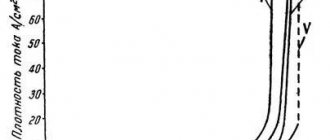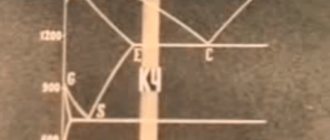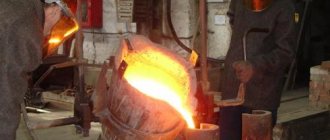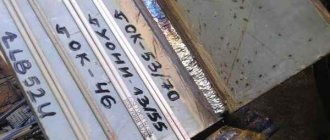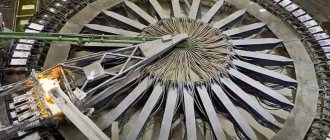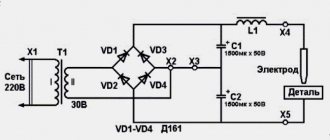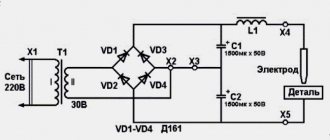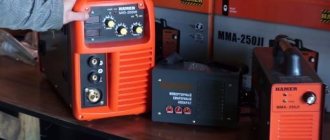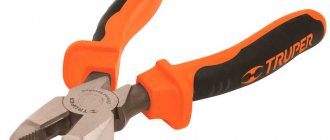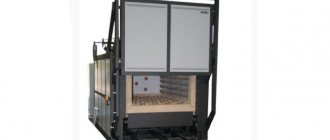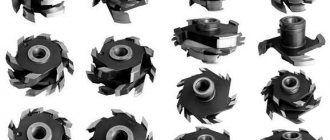WHAT IS THE DIFFERENCE IN HEAT TREATMENT BETWEEN HARDENING AND ANNEALING?
Hardening and annealing of steels are heat treatment processes that change the physical and chemical properties of metals to prepare them for production.
The difference between the two processes is related to temperature and cooling rate, with tempering occurring at lower temperatures but with faster cooling times. Both heat treatments are used to process steel, although annealing produces a softer steel that is easier to work with, while tempering produces a less brittle version that is widely used in construction and industry.
To understand the differences between the processes, it is important to first understand the benefits of heating steel as a metal processing method.
What is heat treatment?
Heat treatment is used to change the physical and mechanical properties of metals without changing their shape. Heating the metal increases the desired characteristics, allowing further processing.
Common reasons for heat treatment include:
- Increased ductility
- Increased elasticity
- Improved formability
- Increased hardness
- Improved processing
- Enhanced Strength
- Increased strength
The effect on heat-treated metals is determined by three factors:
- The specific temperature to which a metal is heated
- The duration of exposure of the metal at this temperature
- Cooling process used
Effective heat treating requires that all three factors be controlled, regardless of the type of metal being processed and the desired results.
Heat treatment
Heat treatment is used to change the physical and mechanical properties of a metal without changing its shape. They are important processes in metal fabrication that enhance the desired characteristics of the metal and allow for further processing.
Various heat treatment processes involve carefully controlled heating and cooling of metal. For example, steel is commonly heat treated for use in a variety of commercial applications.
The general purposes of heat treatment are:
- Increase strength
- Increase hardness
- Improve strength
- Improve processing
- Improve formability
- Increase ductility
- Improve elasticity
The cooling step has different effects depending on the metal and the process. When steel is rapidly cooled, it hardens, whereas the rapid cooling step of solution annealing softens aluminum.
Although there are many types of heat treatments, two important types are annealing and tempering.
What is the hardening process?
Hardening is a process in which a metal is precisely heated to below a critical temperature, often in air, vacuum, or an inert atmosphere. The exact temperature depends on the degree of hardness that needs to be reduced. High temperatures will reduce hardness and increase elasticity and ductility, but may cause a decrease in fluidity and tensile strength. Lower temperatures will retain most of the hardness but reduce brittleness.
Hardening requires gradually heating the metal to prevent cracking. Once the desired temperature is reached, it is maintained for a fixed period of time. A rough guideline for this suggests one hour per inch of thickness, although this depends on the type of metal being processed. Heating relieves internal stress in the metal, after which the metal quickly cools in air.
Visual assessment of hardening
You can get a visual idea of the effect of tempering on steel by evaluating the colors that appear on the surface of hardened steel. Colors range from light yellow to various shades of blue depending on factors such as contact with carbon. This allows the final properties of the steel to be assessed.
Tempering Applications
As mentioned above, tempering is used to increase the toughness of iron alloys, including steel. Tempering is usually carried out after quenching to reduce excess hardness, since unquenched steel is very hard but too brittle for most industrial applications.
Tempering can change ductility, hardness, strength, structural stability and toughness.
Three main types of heat treatment: annealing, hardening, tempering (aging). Their purpose
Thus, by changing the heat treatment regime, it is possible to obtain different physical and mechanical properties of metals. The main heat treatment operations include annealing, normalization, hardening and tempering.
Annealing is a heat treatment consisting of heating the metal to certain temperatures, holding it and then very slowly cooling it along with the furnace. Used to improve metal cutting, reduce hardness, obtain a grain structure, and also to relieve stress, eliminates partially (or completely) all kinds of inhomogeneities that were introduced into the metal during previous operations (machining, pressure treatment, casting, welding), improves the structure of steel.
Annealing of the first kind. This is annealing in which no phase transformations occur, and if they occur, they do not affect the final results intended for its intended purpose. The following types of annealing of the first kind are distinguished: homogenization and recrystallization. Homogenization is annealing with long exposure at temperatures above 950C (usually 1100–1200°C) in order to equalize the chemical composition. Recrystallization is the annealing of hardened steel at a temperature exceeding the temperature at which recrystallization begins, in order to eliminate work hardening and obtain a certain grain size. Annealing of the second kind. This is annealing, in which phase transformations determine its intended purpose. The following types are distinguished: complete, incomplete, diffusion, isothermal, light, normalized (normalization), spheroidizing (for granular perlite). Full annealing is carried out by heating the steel 30–50 °C above the critical point, holding at this temperature and slowly cooling to 400–500 °C at a rate of 200 °C per hour for carbon steels, 100 °C per hour for low-alloy steels and 50 °C C per hour for high alloy steels. The structure of steel after annealing is equilibrium and stable. Partial annealing is carried out by heating the steel to one of the temperatures located in the transformation range, holding and slow cooling. Partial annealing is used to reduce internal stresses, reduce hardness and improve machinability. Diffusion annealing. The metal is heated to temperatures of 1100–1200C, since in this case the diffusion processes necessary to equalize the chemical composition occur more fully. Isothermal annealing consists of the following: the steel is heated and then quickly cooled (usually by transferring it to another furnace) to a temperature below the critical temperature by 50–100C. Normalization - consists of heating the metal to a temperature (30–50) C above the critical point and subsequent cooling in air. High-carbon steels are subjected to normalization in order to eliminate the cementite network. Hardening is heating to an optimal temperature, holding and subsequent rapid cooling in order to obtain a nonequilibrium structure. As a result of hardening, the strength and hardness of the steel increases and the ductility of the steel decreases. Steel tempering is the final heat treatment operation that shapes the structure and, consequently, the properties of steel. Tempering consists of heating steel to different temperatures (depending on the type of tempering, but always below the critical point), holding it at this temperature and cooling at different rates. The purpose of tempering is to relieve internal stresses arising during the hardening process and obtain the necessary structure. Depending on the heating temperature of the hardened part, three types of tempering are distinguished: high, medium and low. High tempering is carried out at heating temperatures above 350–600 °C, but below the critical point; such tempering is used for structural steels. Average tempering is carried out at heating temperatures of 350 – 500°C; Such tempering is widely used for spring and spring steels. Low tempering is carried out at temperatures of 150–250 °C. The hardness of the part after hardening remains almost unchanged; low tempering is used for carbon and alloy tool steels, which require high hardness and wear resistance. Aging is the process of changing the properties of alloys without noticeable changes in the microstructure. If changes in hardness, ductility and strength occur at room temperature, then such aging is called natural. If the process occurs at elevated temperatures, then aging is called artificial.
What is the annealing process?
Annealing involves heating a metal to a predetermined temperature before cooling the material at a slow and controlled rate. The metal is placed in a furnace large enough to allow air to circulate around the workpiece.
The metal is heated to a temperature at which recrystallization can occur. This necessitates the repair of any defects caused by deformation or work. After the metal is kept at the required temperature for a fixed period of time, it is cooled very slowly to room temperature. Low cooling rates provide maximum softness and improved microstructure. This can be done by simply turning off the oven and leaving the metal inside to cool naturally, or by immersing the heated material in sand, ash or other substance with low thermal conductivity.
Annealing can be broken down into three stages; recovery, recrystallization and grain growth, namely:
Recovery
The recovery stage is when the metal is heated so that the internal structures of the material relax.
Recrystallization
As heat increases, the metal reaches a temperature at which recrystallization occurs, allowing new grains to develop within the metal's internal structure without stress being generated. The temperature for this must be higher than the recrystallization temperature of the metal, but lower than the melting temperature.
Grain growth
Controlled cooling rates promote the development of grains formed during recrystallization, resulting in a more ductile and less hard material.
Applications for annealing steels
Annealing is primarily used to reduce the hardness/increase the softness of a metal, however it can also be used to increase electrical conductivity. This process allows the metal to soften enough for cold working, improving machinability and restoring ductility.
This is important for several applications since cold working without annealing can cause cracking. The annealing process relieves mechanical stresses that arise during machining or grinding, allowing the metal to be processed further.
This process is typically used for steel, but can also be used for metals including aluminum, brass and copper.
Differences between hardened and annealed steel
Although both processes are heat treatments, they follow different rules to produce different results for different purposes.
Hardened steel is used where strength, toughness and elasticity are of paramount importance. This includes large-scale construction work, industrial equipment and automotive transmissions. Hardening makes these applications possible and reduces any associated hazards.
Annealing produces softer metals that can be used for products that do not need to withstand significant loads. This includes many household items and other everyday items.
Types of chemical-thermal treatment of metal and alloys, description
The main ones are carbon and nitrogen filling and diffuse metallization. Heating in liquid involves keeping an object in molten salt or iron. Using the gas method, reduction and exchange reactions, dissociation and disproportionation are obtained.
Steel cementation - what is it?
This is the filling of the outer layer of blanks with carbon, in which the amount of the chemical element does not exceed 25%. The procedure improves surface density, wear resistance and hardness. At the same time, the lower layers remain viscous. The treatment is appropriate for workpieces subject to contact wear. At the end, hardening and tempering are performed, controlling the quality of the operation.
The method is appropriate after finishing mechanical processing by covering the product with coatings or a layer of copper. The degree of heating of the part depends on the composition. The less carbon it contains, the higher the heating. For absorption and diffusion, the minimum heating threshold is at least 900-950⁰. Let us consider below the process of the metal cementation method, what it is.
Carbon saturation is carried out with coal semi-coke, peat coke or charcoal. The concentration of the chemical on the surface is up to 1%, otherwise the material becomes brittle. Then it is normalized. Cementation in gas is performed with benzene, methane or kerosene.
Steel nitriding – what is it?
This is filling the outer layer with nitrogen when heated in an ammonia environment to 480-650⁰. It increases resistance to corrosion and wear. When saturated, the size of the part increases. The degree of change depends on temperature and composition. The range most often used is 500-520⁰. By maintaining these parameters for 24-90 hours, you can increase the thickness to 0.5 mm.
Nitrocarburization or cyanidation
This is the name for a type of nitriding. Let's look at the difference between surface nitrocarburization (hardening) of steel and what it is. The process involves filling the outer layer with both carbon and nitrogen. The procedure is carried out on materials in which the amount of nitrogen is 0.3-0.4%. The proportion of substances is regulated by temperature. The higher it is, the more carbon remains. When oversaturated with both components, the product becomes brittle. It is also called nitrocarburization. It is carried out in gas or liquid. The high temperature procedure avoids deformation.
